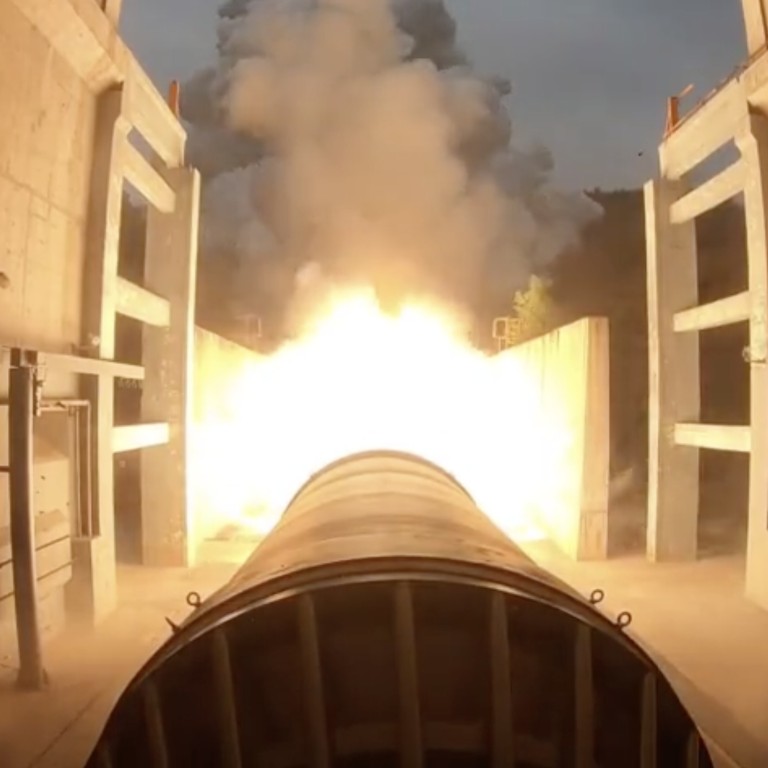
China test fires ‘world’s largest, most hi-tech solid-fuel rocket engine’
- Cutting-edge engine said to generate 500 tonnes of thrust, four times that of the liquid fuel-propelled Long March 5 engine
- An even larger version of the engine, capable of producing 1,000 tonnes of thrust, is under development, China’s largest space contractor says
China says it fired up the world’s largest single-segment solid-fuel rocket engine for the first time, at a ground testing facility in the country’s northwest on Tuesday.
With its high mobility and near-instant launch capability, solid-fuel rockets are mainly used to deliver missiles or on other military platforms.
Most solid rockets are relatively small, in part because, in most circumstances, the delivery of a warhead to destination does not require so much thrust.

Chinese space authorities said they had made a number of technological breakthroughs to “massively increase the payload capacity of solid-propellant rockets”.
For weight reduction, the body of the engine tested was made of composite materials such as high-strength fibres. Some major components including the exhaust nozzle and combustion chamber also used new technology to boost the thrust.
Data from the ground test in Xian, Shaanxi province, suggested the overall performance of the rocket engine was “top of the world”, the CASC said in a statement posted on its social media account.
Tit for tat: China ‘adjusting’ nuclear weapons stockpile to match US
An even larger version of the engine, one that could produce 1,000 tonnes of thrust, is under development, according to the CASC, China’s largest space contractor.
In space programmes, most rockets use liquid fuel because these can burn more efficiently to put more payloads into orbit. But the launch preparation can take days.

01:42
China's Shenzhou 13 launches astronauts on Tiangong space station mission
The quick-launch platform could be a truck or ship, which are more likely to survive in a combat environment.
Besides cost, traditional solid-fuel rockets have some other shortcomings. Their flight is more difficult to control, thus affecting accuracy. And it burns only once.
For decades, China’s solid-fuel rocket technology lagged behind that of the West. But in recent years Chinese scientists have achieved a number of technical advances relating to fuel efficiency, flight control and engine reignition technology – putting them on a par with or even surpassing their competitors, according to a study in June by researchers at the Xian Institute of Aerospace Information.
Can this hypersonic weapon help China defeat armies without casualty? Possibly
The rapid development of solid-fuel rocket technology in China has in part been driven by the hypersonic weapons programme, according to researchers at the China Academy of Launch Vehicle Technology in Beijing in a study last year.
China plans to build an aircraft that can transport 10 passengers from Shanghai to New York in an hour by 2035. For most of the journey, the aircraft would cruise at 15 times the speed of sound with an air-breathing engine in high altitude, but it would need a solid rocket engine for take-off and landing.
The solid rocket engine would not only provide an enormous thrust but also suck in fresh air to help ignite the air-breathing engine, which was much more fuel-efficient but only worked at high Mach numbers, the researchers in Beijing said.
This combined-engine design has found use in China’s hypersonic weapons, according to openly available information.

